Semustine
Synonym(s):N-(2-Chloroethyl)-N′-(4-methylcyclohexyl)-N-nitrosourea;Methyl-CCNU
- CAS NO.:13909-09-6
- Empirical Formula: C10H18ClN3O2
- Molecular Weight: 247.72
- MDL number: MFCD00133811
- SAFETY DATA SHEET (SDS)
- Update Date: 2024-12-18 14:07:02
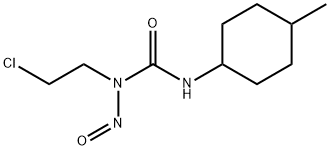
What is Semustine?
Description
In October 2008, scientists of the International Agency for Research on Cancer reaffirmed the Group 1 classification ‘carcinogenic to humans’ of 20 pharmaceutical agents including semustine. Me-CCNU [1-(2-chloroethyl)-3- (4-methylcyclohexyl)-1-nitrosourea] is an alkylating agent of the nitrosourea group, used alone or in combination with other chemotherapeutic agents to treat several types of cancers, including primary and metastatic brain tumors, Lewis lung tumor, and L1210 leukemia. It has also been used to treat cancers of the digestive tract, Hodgkin lymphoma, malignant melanoma, and epidermoid carcinoma of the lung. Doses varied depending on the type of cancer and body weight of the individual. The typical oral dose was 125–200 mgm-2 body surface area, and was repeated every 6 weeks. An alternative regimen was reported to be 200–225 mg m-2 orally every 6–8 weeks. Me-CCNU is a bifunctional antineoplastic agent that undergoes spontaneous chemical decomposition, yielding electrophilic compounds and ultimately inducing alkylation and carbamoylation of cellular macromolecules, including DNA and protein.
Chemical properties
A crystalline solid or light yellow powder.
The Uses of Semustine
Commonly used in pharmacological studies involving: • ;Nutrient-sensitized screening for drugs that shift the energy metabolism from mitchondrial respiration to glycolysis1• ;CEOP regimen with semustine used as induction chemotherapy in patients with lymphoma2• ;Investigations into its use for chemotherapy3,4
The Uses of Semustine
antihyperlipidemic
The Uses of Semustine
Me-CCNU is an investigational drug used in chemotherapy to treat various types of cancers like Hodgkin’s disease, malignant gliomas, gastrointestinal tract adenocarcinomas, breast carcinomas, squamous-cell carcinomas, malignant melanoma, and epidermoid carcinoma of the lung. It is an antineoplastic agent that functions as an alkylating agent. An emerging trend in this arena has been to design hybrid steroid compounds of anticancer agents, because they presumably produce less toxicity, significantly lower than the cytotoxic components alone, and increase anticancer activity of alkylating esters.
What are the applications of Application
Semustine is an alkylating agent and interstrand DNA cross linker
Definition
ChEBI: An organochlorine compound that is urea in which the two hydrogens on one of the amino groups are replaced by nitroso and 2-chloroethyl groups and one hydrogen from the other amino group is replaced by a 4-methylcyclohexyl group.
General Description
Light yellow powder.
Air & Water Reactions
Insoluble in water.
Reactivity Profile
A halogenated and nitrated amide. Organic amides/imides react with azo and diazo compounds to generate toxic gases. Flammable gases are formed by the reaction of organic amides/imides with strong reducing agents. Amides are very weak bases (weaker than water). Imides are less basic yet and in fact react with strong bases to form salts. That is, they can react as acids. Mixing amides with dehydrating agents such as P2O5 or SOCl2 generates the corresponding nitrile. The combustion of these compounds generates mixed oxides of nitrogen (NOx).
Fire Hazard
Flash point data for SEMUSTINE are not available. SEMUSTINE is probably combustible.
Safety Profile
Confirmed human carcinogen producing leukemia. Experimental carcinogenic and tumorigenic data. Poison by ingestion, intraperitoneal, intravenous, and possibly other routes. Mutation data reported. Human systemic effects by ingestion: nausea or vomiting, damage to kidney tubules and glomeruli, and hematuria (blood in the urine). When heated to decomposition it emits very toxic fumes of Cland NOx. See also N-NITROSO COMPOUNDS.
Potential Exposure
Semustine is chemotherapy agent; an antineoplastic agent which functions as an alkylating agent.
Carcinogenicity
1-(2-Chloroethyl)-3-(4-methylcyclohexyl)-1-nitrosourea (methyl-CCNU) is known to be a human carcinogen based on sufficient evidence of carcinogenicity from studies in humans.
Environmental Fate
Semustine is released to the environment through a number of
routes because of its production and use as an antineoplastic
agent. Semustine is an alkylating agent that may hydrolyze
under environmental conditions. Upon its released into air,
semustine will exist in both the vapor and particulate phases in
the atmosphere because of its estimated vapor pressure of
5.6 × 10-6 mm Hg at 25 ℃. Semustine when in vapor phase
will be degraded by reaction with photochemically produced
hydroxyl radicals in the atmosphere (estimated half-life for this
reaction in air is approximately 16 h). Particulate-phase
semustine is removed via wet or dry deposition. Semustine
chromophores (absorbs at 290 nm) are susceptible to direct
photolysis by sunlight. If released to soil, semustine is expected
to have moderate mobility based on an estimated Koc of 330.
Volatilization from moist soil surfaces is not expected to be an
important fate process based on an estimated Henry’s Law
constant of 2.5 ×10-10 atm-cu m mol-1. Biodegradation data
for this compound are not available. Semustine is expected to
adsorb to suspended solids and sediment based on release into
water (based on estimated Koc). Based on this compound’s
estimated Henry’s Law constant, volatilization from water
surfaces is not expected to be an important fate process. An
estimated bioconcentration factor of 70 suggests moderate
bioconcentration in aquatic organisms. Occupational exposure
to semustine is very likely via skin contact at workplaces where
semustine is produced or used. The general population is highly
unlikely to be exposed to this compound unless receiving
specific treatment with semustine as an antineoplastic agent.
Based on the overall literature, it appears that some pharmaceutically
active compounds originating from human or
veterinary therapy are not completely eliminated in municipal
sewage treatment plants and are therefore discharged into
receiving waters. Wastewater treatment processes often were
not designed to remove them from the effluent. Selected
organic waste compounds may be degrading to new and more
persistent compounds that may be released instead of or in
addition to the parent compound.
Shipping
UN3249 Medicine, solid, toxic, n.o.s., Hazard Class: 6.1; Labels: 6.1-Poisonous materials. PG II.
Toxicity evaluation
Me-CCNU exerts its toxicity by cross-linking with DNA or DNA-alkylation, carbamoylation of proteins besides DNA strand breakage. It is cytotoxic in all stages of the cell cycle. Phenobarbital (PB) pretreatment increases nephrotoxicity of this compound, suggesting enhanced metabolism of this compound coupled with generation of reactive intermediates. PB pretreatment is also known to cause increased alkylation of both liver and kidney macromolecules and an increase in the urinary clearance of ethylene-labeled Me-CCNU. Modulation of liver biotransformation influenced the level of covalent binding and alkylation, which correlated with the degree of Me-CCNU-induced nephrotoxicity. Evidence in favor of Me-CCNU liver biotransformation came from an in vivo/in vitro colony-forming assay that demonstrated the presence of a cytotoxic metabolite in the bile of a Me- CCNU-administered rat. These studies suggest that hepatic metabolism contributes significantly to the alkylating activity of Me-CCNU in the liver and the kidney, and indicate that a liver-derived metabolite may be responsible for the renal toxicity of Me-CCNU.
Incompatibilities
Incompatible with oxidizers (chlorates, nitrates, peroxides, permanganates, perchlorates, chlorine, bromine, fluorine, etc.); contact may cause fires or explosions. Keep away from strong acids, alkaline materials, strong bases. Semustine, an organic amide, reacts with azo and diazo compounds, releasing toxic gases. Amides are very weak bases but they can react as acids, forming salts. Contact with reducing agents can release flammable gases. Mixing amides with dehydrating agents such as such as phosphorus pentoxide or thionyl chloride generates the corresponding nitrile.
Waste Disposal
It is inappropriate to dispose of expired or waste drugs and pharmaceuticals by flushing them down the toilet or discarding them to the trash. Household quantities of expired or waste pharmaceuticals may be mixed with wet cat litter or coffee grounds, doublebagged in plastic, discard in trash. Larger quantities shall carefully take into consideration applicable DEA, EPA, and FDA regulations. If possible return the pharmaceutical to the manufacturer for proper disposal being careful to properly label and securely package the material. Alternatively, the waste pharmaceutical shall be labeled, securely packaged and transported by a state licensed medical waste contractor to dispose by burial in a licensed hazardous or toxic waste landfill or incinerator.
Properties of Semustine
| Melting point: | 64°C (rough estimate) |
| Density | 1.3346 (rough estimate) |
| refractive index | 1.5500 (estimate) |
| storage temp. | Store at -20°C,unstable in solution, ready to use. |
| solubility | Soluble in DMSO |
| pka | 10.89±0.40(Predicted) |
| form | Solid |
| color | Light yellow to yellow |
| CAS DataBase Reference | 13909-09-6 |
| IARC | 1 (Vol. Sup 7, 100A) 2012 |
| EPA Substance Registry System | 1-(2-Chloroethyl)-3-(4-methylcyclohexyl)-1-nitrosourea (13909-09-6) |
Safety information for Semustine
| Signal word | Danger |
| Pictogram(s) |
 Skull and Crossbones Acute Toxicity GHS06  Health Hazard GHS08 |
| GHS Hazard Statements |
H300:Acute toxicity,oral H315:Skin corrosion/irritation H319:Serious eye damage/eye irritation H335:Specific target organ toxicity, single exposure;Respiratory tract irritation H350:Carcinogenicity H360:Reproductive toxicity |
| Precautionary Statement Codes |
P202:Do not handle until all safety precautions have been read and understood. P280:Wear protective gloves/protective clothing/eye protection/face protection. P301+P310:IF SWALLOWED: Immediately call a POISON CENTER or doctor/physician. P305+P351+P338:IF IN EYES: Rinse cautiously with water for several minutes. Remove contact lenses, if present and easy to do. Continuerinsing. |
Computed Descriptors for Semustine
New Products
Tert-butyl bis(2-chloroethyl)carbamate (S)-3-Aminobutanenitrile hydrochloride N-Boc-D-alaninol N-BOC-D/L-ALANINOL N-octanoyl benzotriazole 4-Hydrazinobenzoic acid 3,4-Dibenzyloxybenzaldehyde 1,1’-CARBONYLDIIMIDAZOLE R-2-BENZYLOXY PROPIONIC ACID 1,1’-CARBONYLDI (1,2-4 TRIAZOLE) 4-HYDROXY BENZYL ALCOHOL 3-NITRO-2-METHYL ANILINE (2-Hydroxyphenyl)acetonitrile 4-Bromopyrazole 5-BROMO-2CYANO PYRIDINE 5,6-Dimethoxyindanone 5-broMo-2-chloro-N-cyclopentylpyriMidin-4-aMine 4-methoxy-3,5-dinitropyridine 2-(Cyanocyclohexyl)acetic acid 2-aminopropyl benzoate hydrochloride 1-(4-(aminomethyl)benzyl)urea hydrochloride tert-butyl 4- (ureidomethyl)benzylcarbamate diethyl 2-(2-((tertbutoxycarbonyl)amino) ethyl)malonate Ethyl-2-chloro((4-methoxyphenyl)hydrazono)acetateRelated products of tetrahydrofuran

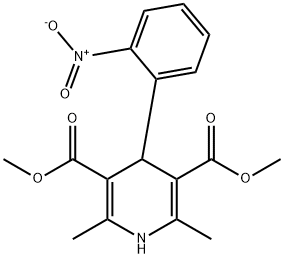
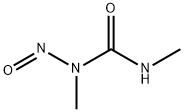
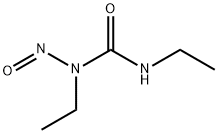
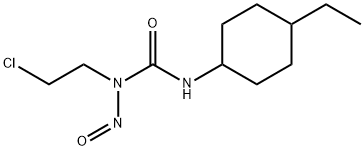
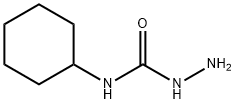


You may like
-
 Semustine CAS 13909-09-6View Details
Semustine CAS 13909-09-6View Details
13909-09-6 -
 55441-95-7 99%View Details
55441-95-7 99%View Details
55441-95-7 -
 N-Vinylformamide 99%View Details
N-Vinylformamide 99%View Details
13162-05-5 -
 Chloro Uracil 1820-81-1 99%View Details
Chloro Uracil 1820-81-1 99%View Details
1820-81-1 -
 207557-35-5 99%View Details
207557-35-5 99%View Details
207557-35-5 -
 2-ethyl-6-methyl-3-hydroxypyridine succinate 99%View Details
2-ethyl-6-methyl-3-hydroxypyridine succinate 99%View Details
127464-43-1 -
 2-ETHYLPYRIDINE 100-71-0 99%View Details
2-ETHYLPYRIDINE 100-71-0 99%View Details
100-71-0 -
 181228-33-1 (S)-Methyl 3-amino-2-((tert-butoxycarbonyl)amino)propanote Hydrochloride (DAP-OMe. HCl) 99%View Details
181228-33-1 (S)-Methyl 3-amino-2-((tert-butoxycarbonyl)amino)propanote Hydrochloride (DAP-OMe. HCl) 99%View Details
181228-33-1